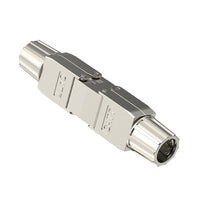Contents
In most cases, people won’t care about the maximum length of the Ethernet cable as they seldom run cables over 300 feet for their home network. But if you live in an extremely large home or want to install a network in a large place, it is essential to know how long an Ethernet cable can be because it will affect your data transmission and network speed. How far can an Ethernet cable be? You have come to the right place to learn more about maximum Ethernet cable length.
Does Ethernet Length Matter for Network Speed?
Like many other cables, running an Ethernet cable over a too-long distance will also affect the quality of data transmission. Running the Ethernet cable over the maximum length will result in signal attenuation, dropped packets, and an unstable connection.

It is known that the Ethernet cable features eight copper wires, and they transfer electrical signals. As the electrical signal travels through the Ethernet cable, the longer it travels, the greater risk it will be affected by internal crosstalk and external interference. In addition, once you run a single cable over the maximum length, the network connection will degrade from one cable to the next.
How Long Can an Ethernet Cable Be?
Different LAN cables have different maximum network speed, but generally have the same maximum length. To avoid signal degradation, the 100-meter or 328-feet distance limit is recommended by the manufacturer. You may find your Ethernet cable still works well over 100 meters, especially when you use a high-quality shielded cable. But if you use a cable tester, you’ll see a reduction in data rate and stability, which can cause game lag and slow file download.

If you’re using Cat6 and Cat8 cables, it is essential to know how long your cable will run. Some network cables can only maintain their maximum length to a certain length. For example, the maximum speed of Cat6 cables can reach 10 Gbps within 55 meters, but it will be limited to 1 Gbps over that distance. And the Cat8 cable has a maximum channel length of 30 meters for 25Gbps or 40 Gbps. The ideal Ethernet cable length depends on your own need. If you want a Cat6 speed at 100 meters, you may require a Cat6a cable.
|
|
Cat5e |
Cat6 |
Cat6a |
Cat8 |
|
10 meters / 33 feet |
1 Gbps |
10 Gbps |
10 Gbps |
40 Gbps |
|
30 meters / 98 feet |
1 Gbps |
10 Gbps |
10 Gbps |
40 Gbps |
|
55 meters / 180 feet |
1 Gbps |
10 Gbps |
10 Gbps |
10 Gbps |
|
100 meters / 328 feet |
1 Gbps |
1 Gbps |
10 Gbps |
10 Gbps |
In general, an Ethernet cable is enough for a home network. Shorter Ethernet cables can ensure high-quality data transmission and low interference. They also take up less space, making your network installation easy and cost-effective. Some people may consider using fiber optic instead of Ethernet cable, but for many people, it can be expensive and overkill to use fiber optic cable.
Will Temperature Affect the Length of Network Cable?
Of course. The Ethernet cable length should be adjusted according to different temperatures. It is recommended to install the Ethernet cable when the temperature is 0°C to 75°C (32°F to 167°F). When the temperature is too low, the cable will be challenging to install as the cable jacket will become stiff. In addition, you should take the temperature variation into consideration. Sudden temperature increases or decreases will affect the cable performance, so you’d better choose those outdoor-rated Ethernet cables.
Can I Bend the Ethernet Cable?
It is OK to tightly bend an Ethernet cable but don’t bend it too much. Bending an Ethernet cable at a tight angle may affect the speed, and you should carefully take a look at the cable specification before installing the cable. Manufacturers often offer a maximum bend radius, and you should follow that.

Can I Extend the Network Cable?
The Ethernet cable has a maximum length, but that doesn’t mean you have no methods to extend your Ethernet cable. It is possible to extend your Ethernet cable exceeding the maximum length with some equipment. All you need to buy is a network switch. Network switches can effectively help you create an additional Ethernet connection at home or in the office without affecting the cable’s performance. If you have PoE devices, you can also purchase a high-performance PoE switch.
But if you want to run a long wired network over multiple miles, a fiber optic cable is your best option.
Tips: If you want to extend your Ethernet connection within 100 meters, there are also other methods and you can look at this post: How to Extend Ethernet Cable?
For more information on this topic, you can keep up on our blogs. While VCELINK offers general and basic information for our customers and other visitors to the website, it’s not professional advice.






Be the first one to comment.
Leave a comment